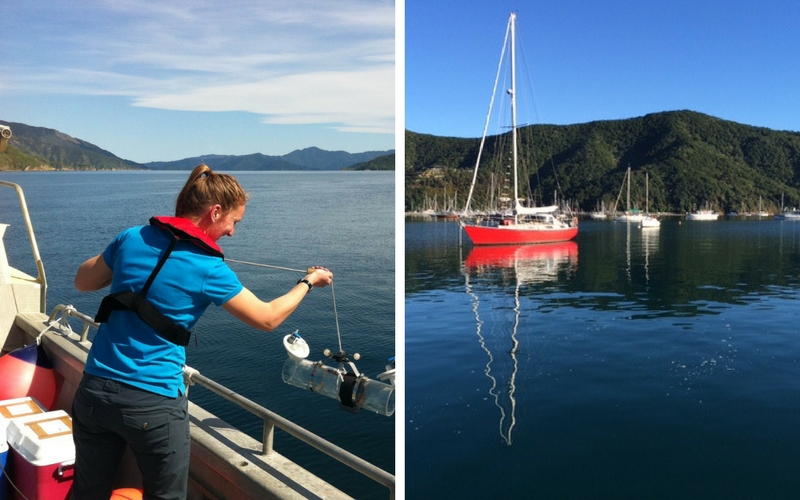Coastal Water Quality

We generally enjoy good water quality in the Marlborough Sounds.
However, some activities can impact on that. Sewage, run-off from land, sedimentation, vessel discharge, marine farm discharges and boat maintenance activities can all have a negative effect.
Council's coastal monitoring programme provides essential information for good decisions on resource consents, future planning and protection for the Sounds.
Water quality monitoring was established in Queen Charlotte Sound/Totaranui in 2011 and in Pelorus/Te Hoiere Sound in 2012.
Information collected each month on temperature, nutrient levels, phytoplankton and seawater chemistry is proving to be important for understanding how the Sounds ecosystems work. Planning is under way to make data available online via an app.
Council commissioned the Cawthorn Institure to provide advise on water quality standards for the Environment Plan.
This scientific data will also feed into a national database run by Land Air Water Aotearoa (LAWA), alongside the recreational bathing data.
Water Quality Reports
- Coastal Water Quality Classes for Marlborough Environment Plan by Cawthron (PDF, 310.9KB)
- Marlborough Sounds Water Quality Monitoring Results 2014-2015 (PDF, 6.1MB)
- Monthly Monitoring Locations in the Marlborough Sounds (PDF, 591.3KB)
- Review of all water quality monitoring data in the Marlborough Sounds by NIWA 2011-2015 (PDF, 19.8MB)
- Review of all water quality monitoring data in the Marlborough Sounds by NIWA 2011-2018 (PDF, 32.5MB)
- Review of historical water quality data from Pelorus and Queen Charlotte Sounds by NIWA 2013 (PDF, 5.4MB)
- Review of plankton data from Pelorus and Queen Charlotte Sounds by NIWA (PDF, 9.7MB)

